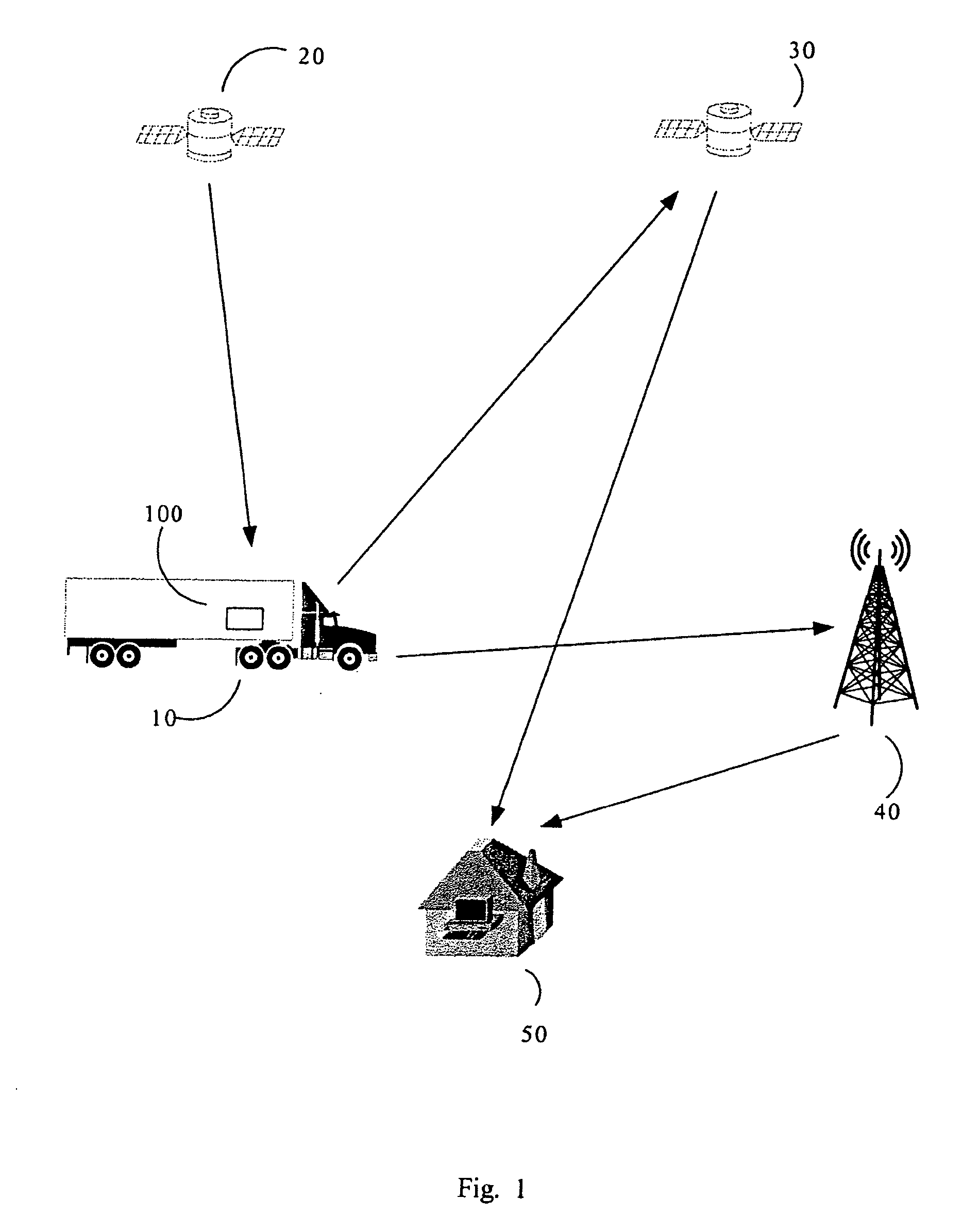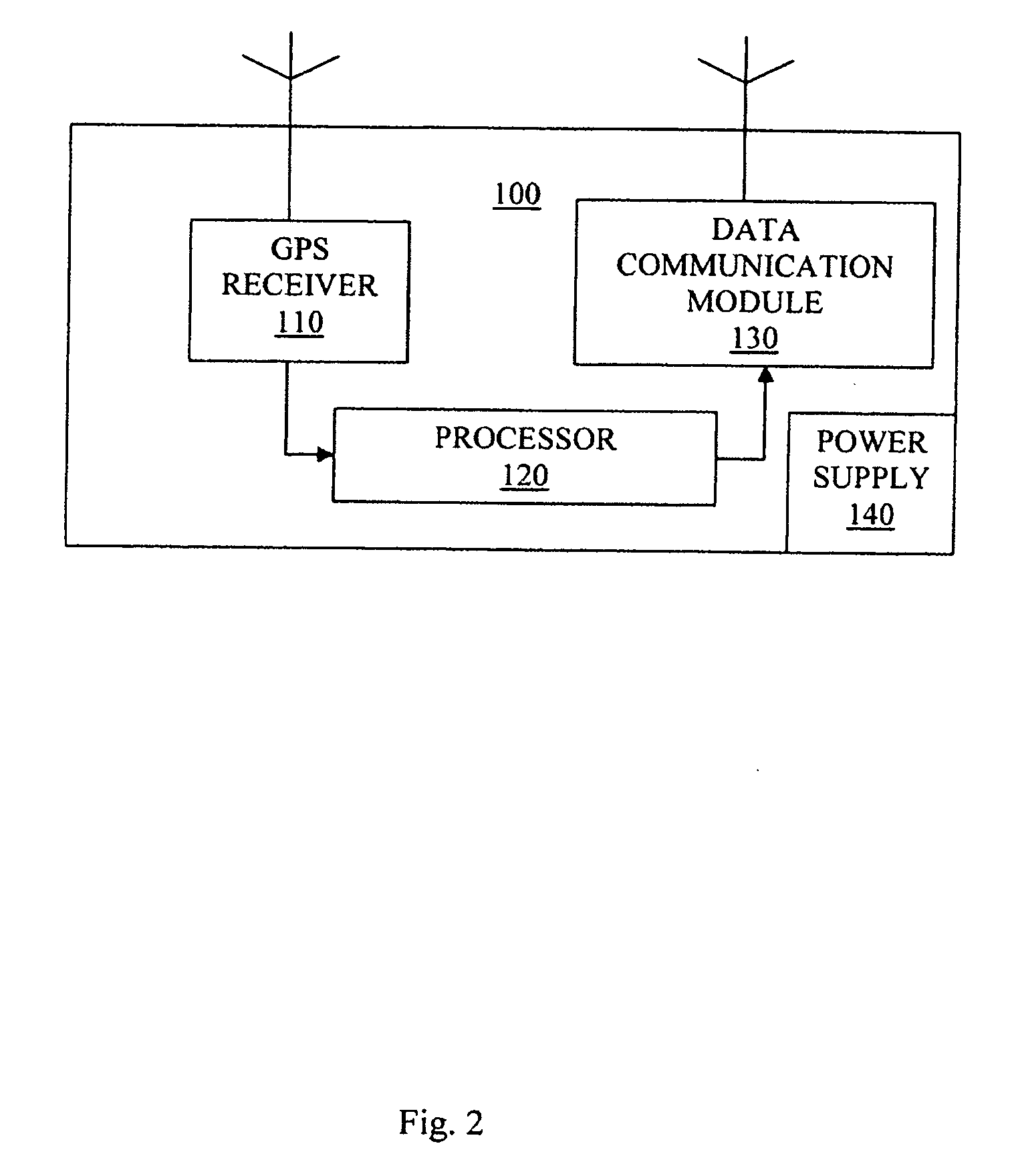Computer-based dispatching system and method
a dispatching system and computer technology, applied in the field of computer-based dispatching system and method, can solve the problems of bottlenecks in the system at the delivery location, the inability to accurately estimate the completion time of the delivery, and the inability to move goods and materials between locations using a fleet of delivery vehicles. to achieve the effect of increasing the accuracy of estimated completion time and more accurate scheduling of deliveries
- Summary
- Abstract
- Description
- Claims
- Application Information
AI Technical Summary
Benefits of technology
Problems solved by technology
Method used
Image
Examples
Embodiment Construction
[0030]FIG. 1 illustrates a single delivery vehicle 10 of a fleet of delivery vehicles in communication with a base station 50 in accordance with a dispatching system of the present system. The delivery vehicle 10 is equipped with a location transmitting device 100 that can receive global positioning system or GPS coordinates and other data from a GPS satellite network 20. Although FIG. 1 illustrates the GPS satellite network 20 with a single satellite, someone skilled in the art will understand that the GPS satellite network 20 will comprise a plurality of satellites.
[0031] The location transmitting device 100 is operative to determine location information using the GPS satellite network 20 and communicate this location information to the base station 50. Typically, the location transmitting device 100 communicates with the base station 50 using a cellular carrier service 40 or a satellite carrier service 30 as shown in FIG. 1, although a person skilled in the art will appreciate t...
PUM
 Login to View More
Login to View More Abstract
Description
Claims
Application Information
 Login to View More
Login to View More - R&D
- Intellectual Property
- Life Sciences
- Materials
- Tech Scout
- Unparalleled Data Quality
- Higher Quality Content
- 60% Fewer Hallucinations
Browse by: Latest US Patents, China's latest patents, Technical Efficacy Thesaurus, Application Domain, Technology Topic, Popular Technical Reports.
© 2025 PatSnap. All rights reserved.Legal|Privacy policy|Modern Slavery Act Transparency Statement|Sitemap|About US| Contact US: help@patsnap.com



